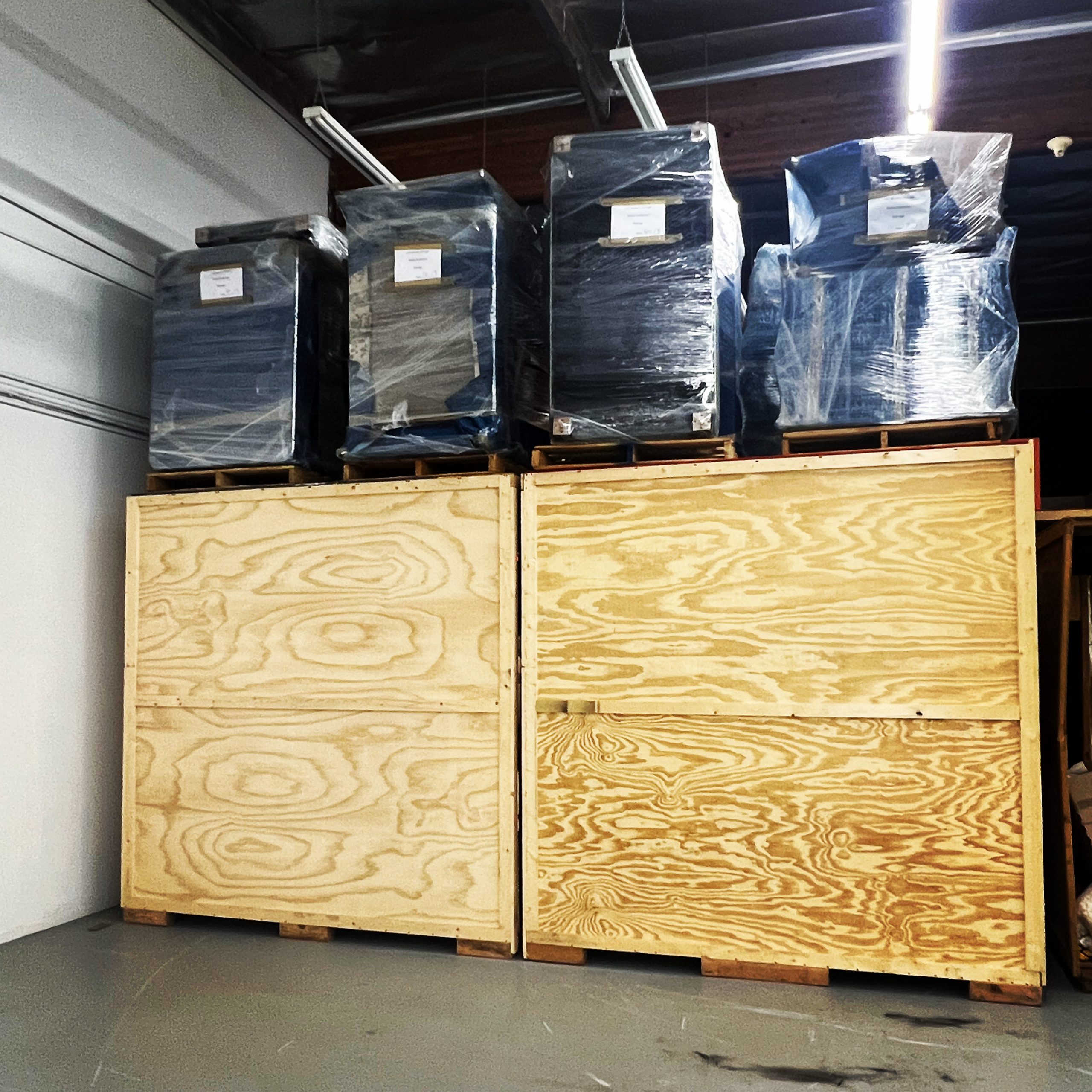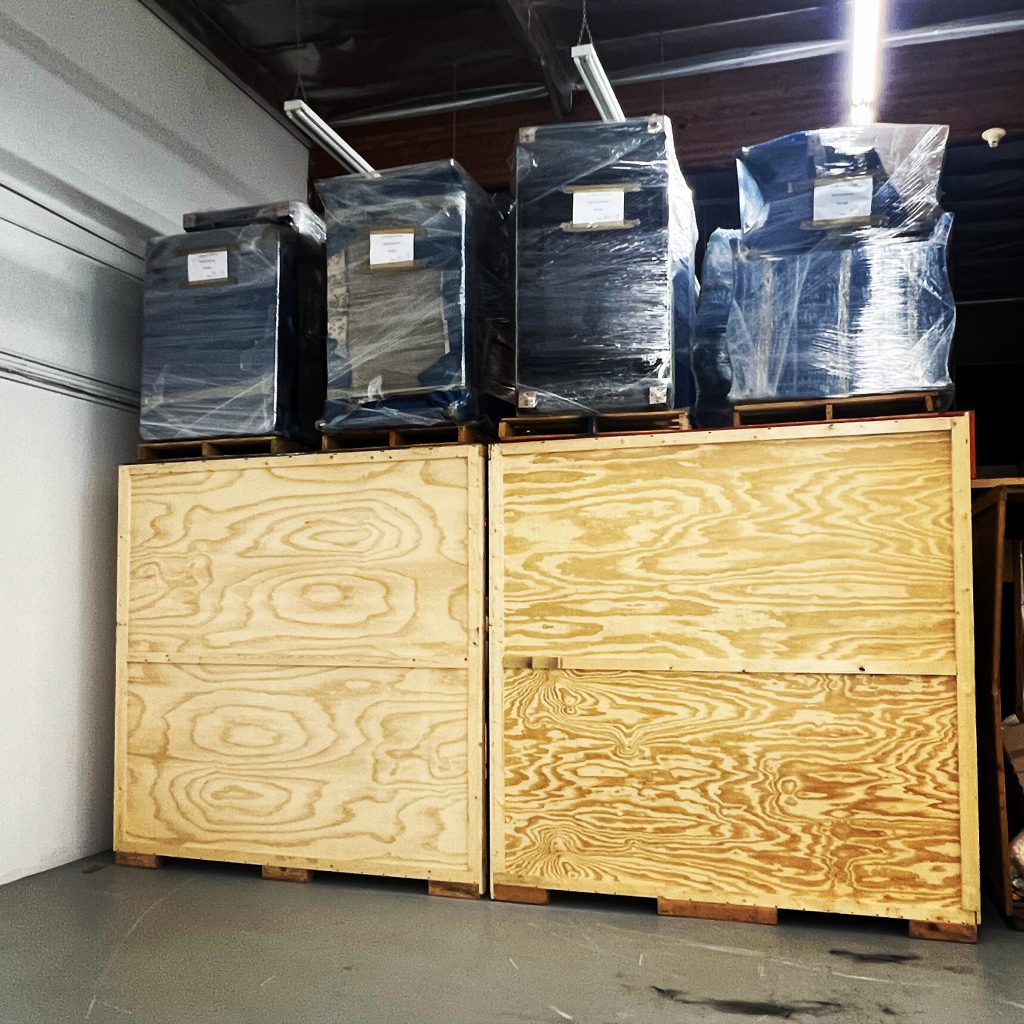How To Use Warehouse Storage in Los Angeles
Defining Warehouse Storage
What Is Warehouse Storage?
Warehouse storage is “a large-scale storage solution typically housed in an expansive, often customizable, area,” as defined by SpareFoot. A warehouse is designed to store a variety of items, from furniture and household goods to business inventory and office equipment. These facilities provide plenty of space to keep belongings safe and organized. Unlike standard self-storage units, warehouse storage is best for those needing to store large amounts of items during a move, renovation, or office transition. Warehouses often have high ceilings, loading docks, and climate control to protect stored goods from damage.
Many people choose warehouse storage because it provides flexibility for both short- and long-term needs. Whether storing a few extra household items or managing inventory for a business, warehouse facilities offer customizable solutions to fit different storage requirements. Some facilities even provide additional services like climate control, inventory tracking, and enhanced security features.
Key Features of Warehouse Storage
Warehouse storage comes with features that make it a practical option for various needs. These key features help keep belongings safe and easily accessible:
- Size and Scale: Warehouses can hold everything from a few furniture pieces to an entire home’s or office’s contents.
- Access and Usage: Individuals can store household goods, furniture, and personal belongings, while businesses may use warehouse storage for office equipment or inventory.
- Lease Terms: Some facilities offer short-term rental options, while others cater to long-term storage needs.
- Security Measures: Many warehouses have surveillance cameras, controlled access, and on-site staff for added protection.
- Climate Control: Some facilities offer temperature-controlled storage to prevent damage to sensitive items like electronics, wood furniture, and artwork.
Benefits of Renting Storage Space in Los Angeles
Extra Space for Homes, Offices, and Moves
Storage solutions are valuable for people who need additional space, whether during a move, renovation, or for general organization. Many homeowners use warehouse storage to free up room without having to get rid of furniture or sentimental belongings. Businesses also benefit by keeping excess inventory, office furniture, or archived documents in a secure facility while maintaining a clutter-free workspace.
Additionally, moving timelines don’t always line up perfectly. “If there’s a gap between your move-out and move-in dates, many companies offer short-term or long-term storage solutions,” informs this Forbes article. Warehouse storage can serve as a temporary solution when there’s a gap between move-out and move-in dates. Instead of rushing to make arrangements, having a secure storage unit ensures that belongings remain safe and easily accessible.
For businesses, warehouse storage provides an alternative to expanding office or retail space. Rather than paying for additional square footage, companies can keep non-essential equipment and files in a storage facility. This is especially useful for small businesses operating out of limited commercial spaces.
Storing Seasonal, Household, and Office Items
Many people find that seasonal and occasional-use items take up unnecessary space at home or work. Instead of letting these items create clutter, warehouse storage allows them to be stored safely until needed.
Common storage needs include:
- Household Items: Furniture, appliances, and seasonal decorations.
- Recreational Equipment: Surfboards, bikes, and camping gear.
- Office Supplies and Equipment: Extra office furniture, documents, and promotional materials.
- Retail Inventory: Seasonal stock, displays, and marketing materials that are not needed year-round.
Security for Valuables During Moves or Extended Travel
For those storing valuable belongings, security is a major concern. Many warehouse storage facilities offer advanced security measures, including:
- 24/7 surveillance cameras to monitor storage areas and deter theft.
- Gated access with individual entry codes to ensure only authorized users can enter.
- Climate control options to protect against damage from extreme temperatures or humidity.
- On-site staff or managers who monitor activity and assist renters.
People who travel frequently or live in multiple locations throughout the year can benefit greatly from warehouse storage. Instead of leaving valuable belongings in an empty home, they can store them securely until needed. This is particularly useful for individuals with second homes, remote work lifestyles, or those who spend extended periods away for work or leisure.
What To Store in a Los Angeles Warehouse
Household Furniture and Appliances
Homeowners often use warehouse storage for bulky furniture and appliances they don’t currently need but don’t want to part with. Whether transitioning between homes, remodeling, or downsizing, keeping these items in storage ensures they remain in good condition.
Storing appliances requires additional preparation, such as cleaning them thoroughly and ensuring they are dry to prevent mold growth. Covering furniture with protective wraps can prevent dust accumulation and damage over time.
Office Equipment and Supplies
Businesses can use warehouse storage for office furniture, electronics, and records. Office relocations, downsizing, or renovations can create the need for temporary storage. Warehouses provide a secure and organized environment to store:
- Desks, chairs, and filing cabinets.
- Computers, printers, and networking equipment.
- Archived records and business documents that require secure storage.
For businesses with fluctuating inventory needs, warehouse storage can serve as a backup space for additional stock or seasonal merchandise.
Personal Belongings and Collectibles
For those with valuable or sentimental belongings, warehouse storage offers a secure place to keep them safe. Climate-controlled units are ideal for preserving delicate items over time, such as:
- Family heirlooms and antiques.
- Artwork, photo albums, and collectible items.
- Important documents and books.
Collectors of rare or valuable items, such as vintage records, wine, or sports memorabilia, may also find warehouse storage beneficial. These facilities provide the right conditions to prevent damage and maintain the value of their collections.
Recreational and Seasonal Equipment
For those who enjoy outdoor activities, sports, or seasonal decorations, warehouse storage can help keep their home or garage clutter-free. Items such as kayaks, paddleboards, skis, and holiday decorations can be stored safely during the off-season, protecting them from wear and tear.
Additionally, warehouse storage provides a safe location for large recreational vehicles, such as ATVs or jet skis, when not in use.
Factors to Consider When Choosing Warehouse Storage in Los Angeles
Location and Accessibility
Selecting the right warehouse storage facility involves considering proximity to your home or business. A conveniently located facility minimizes travel time, making it easier to access belongings when needed. Some warehouses also offer 24-hour access, allowing greater flexibility for those with busy schedules. If you plan on storing large or heavy items, selecting a facility with drive-up access or loading docks can make loading and unloading more efficient.
Traffic congestion in Los Angeles can be a major factor when choosing a storage facility. If you require frequent access to stored items, opting for a location near major highways or central business districts can save time and hassle. For businesses, being close to suppliers or distribution centers may also be beneficial.
Storage Facility Features
Not all warehouse storage facilities offer the same amenities. Consider factors such as:
- Climate Control: Ideal for storing electronics, wooden furniture, and delicate materials that may be affected by temperature fluctuations.
- Security Systems: Look for gated access, surveillance cameras, and on-site security to protect valuable belongings.
- Flexible Lease Terms: Some facilities offer month-to-month rentals, while others require long-term contracts. Determine which option aligns with your needs.
- Loading and Unloading Areas: Drive-up access or loading docks can make moving items in and out easier, particularly for businesses or those storing heavy furniture.
- Facility Reputation and Reviews: Research customer reviews and ratings to ensure the facility is reliable, clean, and well-managed.
Taking the time to compare different warehouse storage options can help ensure that you choose the right facility for your specific needs.
Strategic Packing and Organization Techniques
Protecting Items in Storage
Taking extra precautions when packing can prevent long-term damage to stored belongings. Certain items require special care to ensure they remain in good condition over time.
- Wrap furniture and fragile items in protective covers or padding to prevent scratches and dents.
- Use plastic bins instead of cardboard boxes to prevent moisture damage and protect against pests.
- Label boxes clearly to make finding items easier and avoid the hassle of opening multiple boxes to locate what you need.
- Disassemble large furniture such as tables and bed frames to save space and prevent damage during transport and storage.
Instead of handling it all yourself, consider using packing services. Moving professionals will know the right packing techniques and materials to use to maintain the condition of your items while in storage. "From bubble wrap and boxes to packing tape and foam cushioning, your packers will bring the very best moving supplies and equipment to ensure all of your belongings are properly protected and boxed up securely," assures Moving.com.
Safety and Security for Los Angeles Valuables
Storage Facility Security Features
Security is a top priority when selecting a warehouse storage facility. Many facilities have multiple layers of protection, ensuring that stored belongings remain safe from theft, vandalism, and environmental damage.
- Gated access with unique entry codes to prevent unauthorized visitors from entering the facility.
- On-site security staff monitoring activity to provide an added layer of protection against theft and suspicious behavior.
- 24/7 video surveillance to record all activity and deter break-ins.
Access control systems are another tool that can be used to protect assets in storage. "These systems aim to ensure that only authorized personnel can access the facility. In context, this often involves using a keypad or access credential to open a gate or door," explains Pavion.
Personal Safety Measures
In addition to facility security, renters can take extra steps to keep their belongings safe. While a facility may offer top-tier security features, taking personal precautions can add another level of protection to stored valuables.
- Choose a facility with fire prevention systems to safeguard against potential hazards such as electrical fires or accidental damage.
- Keep an updated inventory of stored belongings, including photos and descriptions, to help track items and facilitate insurance claims if needed.
- Visit the facility periodically to check on stored belongings and ensure they remain in good condition.
Storing valuables in a secure warehouse facility can provide peace of mind, but renters should still take proactive steps to minimize risk and ensure their belongings remain protected.
Insuring Items Stored in a Los Angeles Warehouse
Why Insurance Matters
Even with high-security storage facilities, accidents and unexpected events such as natural disasters, fires, or theft can still occur. Insurance offers an added layer of protection, ensuring that stored belongings are covered in case of damage or loss. Whether storing personal valuables, business inventory, or seasonal items, insurance provides peace of mind that these items are financially protected.
Many storage facilities offer their own insurance plans, but storage renters may also be able to extend coverage through their homeowner’s or renter’s insurance policies. It’s important to verify what is covered and whether additional protection is needed. Progressive adds, "If the total value of what you're storing exceeds your renters insurance policy's personal property coverage limits or sub-limits, a separate insurance policy from a storage insurer can provide additional coverage."
Choosing the Right Insurance Policy
When selecting insurance for stored items, consider the following:
- Coverage Scope: Ensure the policy covers common risks such as fire, flooding, theft, and natural disasters.
- Replacement Cost vs. Actual Cash Value: Some policies reimburse the full replacement cost of lost or damaged items, while others consider depreciation.
- Exclusions and Limitations: Be aware of any restrictions on high-value items, such as antiques, jewelry, or electronics.
- Facility-Provided Insurance vs. Third-Party Insurance: Compare options to find the best balance between affordability and comprehensive coverage.
For businesses storing commercial inventory, specialized policies may be available to cover stock fluctuations and business losses due to unforeseen damages.
Claiming Items Damaged in Storage
If an insured item is damaged or stolen while in storage, the following steps can be followed to initiate the claims process:
- Document the loss with photos or videos of the damaged items. Also include any receipts or appraisals for high-value items.
- Report the incident to the storage provider (if they are not already aware). For theft or vandalism, it is recommended to file a police report.
- Notify the insurance provider by submitting the claim with the necessary documentation.
Be sure to file your claim promptly upon discovery of the theft or damage.
Cost Considerations for Warehouse Storage in Los Angeles
Factors Affecting Storage Costs
The cost of warehouse storage in Los Angeles varies depending on several factors, including:
- Unit Size: Larger spaces come with higher rental costs, but they may be necessary for bulk storage needs.
- Facility Location: Storage facilities in central areas or high-demand neighborhoods may have higher rental fees compared to those in suburban locations.
- Climate Control: Temperature-controlled storage costs more but is necessary for delicate or valuable items.
- Security Features: Enhanced security measures, such as 24-hour surveillance, gated access, and on-site personnel, can add to the rental cost.
- Lease Length: Long-term rental agreements may offer discounts, whereas short-term rentals typically come at a premium rate.
Short-Term vs. Long-Term Storage Costs
For those who need temporary storage, such as during a move or renovation, short-term rental options offer flexibility but may come at a higher monthly cost. Long-term storage solutions can provide better value for businesses or individuals needing extended storage, especially when opting for a fixed-rate lease.
Many facilities offer tiered pricing based on lease duration, with discounts for longer commitments. If storing inventory for a business, weighing the cost of storage against the cost of expanding business space can help determine the most cost-effective approach.
Hidden Fees and Additional Charges
When budgeting for warehouse storage, it's essential to factor in potential extra costs, such as:
- Administrative Fees: Some facilities charge processing or sign-up fees.
- Late Payment Penalties: Missing a payment may result in fines or restricted access to the storage unit.
- Insurance Costs: If facility-provided insurance is required, this will be an additional expense.
- Access Fees: Some warehouses charge for after-hours or high-frequency access.
Comparing different facilities and reading rental agreements carefully can help avoid unexpected expenses and ensure a storage solution that fits within the budget.
Conclusion
Warehouse storage in Los Angeles provides a convenient and secure solution for individuals and businesses alike. By carefully selecting a facility, properly packing belongings, and considering insurance and cost factors, renters can ensure that their items remain protected and accessible when needed. Whether used for moving, decluttering, or long-term storage, warehouse facilities offer a practical way to manage space efficiently.






